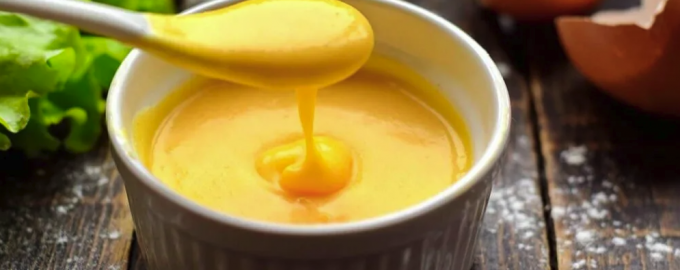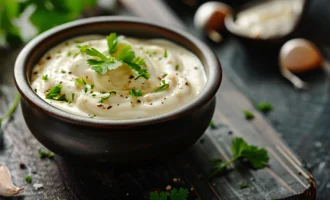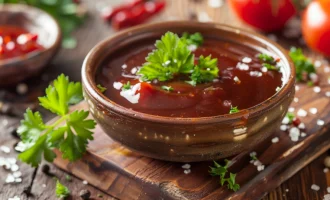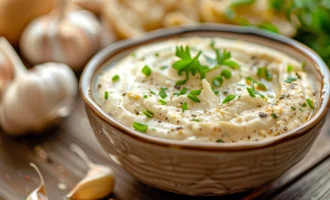- 3 egg yolks
- 1 tablespoon water
- 225 grams unsalted butter, melted
- 1 tablespoon freshly squeezed lemon juice
- Salt and pepper to taste
-
In a small bowl, whisk together the egg yolks and water until well combined.
-
Set up a double boiler by placing a heatproof bowl over a pot of simmering water. Make sure the water does not touch the bottom of the bowl.
-
Gradually pour the melted butter into the egg yolk mixture, whisking constantly to create an emulsion. Continue whisking until the mixture thickens.
-
Remove the bowl from the heat and whisk in the lemon juice. Season with salt and pepper to taste.
-
If the sauce becomes too thick, you can thin it out by adding a little warm water or lemon juice, whisking continuously until desired consistency is reached.
-
Serve immediately or keep warm in a thermos or a bowl placed over a pot of hot water until ready to use.
The Hollandaise sauce is traditionally served with eggs Benedict, a classic breakfast dish consisting of poached eggs on toasted English muffins with ham or bacon, topped with the rich and creamy Hollandaise sauce. It is also delicious with vegetables, such as asparagus or broccoli, and can be used as a topping for grilled fish or chicken.
In conclusion, Hollandaise sauce is a classic emulsified sauce originating from Holland. It is known for its rich and creamy texture, created by the emulsion of butter and egg yolks. The sauce adds a luxurious and indulgent flavor to a variety of dishes and is especially popular in breakfast and brunch recipes. However, due to its high fat content, it should be enjoyed in moderation as part of a balanced diet.
Facts about the sauce:
- Hollandaise sauce is one of the five mother sauces in French cuisine, along with Béchamel, Espagnole, Velouté, and Tomato sauce.
- It is believed that Hollandaise sauce was first made in the 17th century in France but was inspired by a similar Dutch sauce called “sauce Isigny.”
- The key to a successful Hollandaise sauce is achieving the right balance of heat and continuous whisking to prevent the eggs from curdling and to create a smooth and creamy texture.







